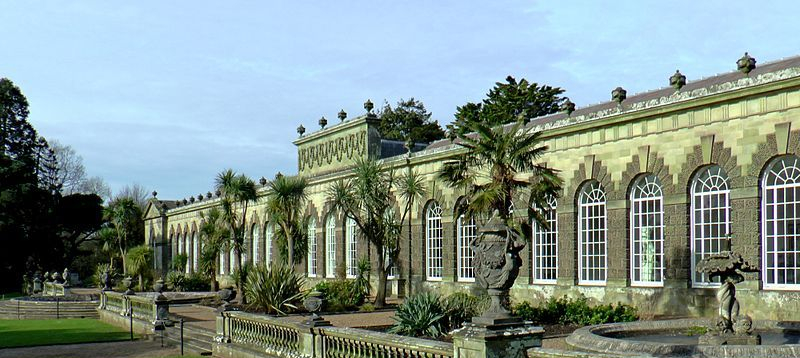Originally 327 feet in length, the Orangery at Margam was one of the longest in Britain, and while it may not be that long now, it is still considered one of the finest examples of an 18th Century building in Britain. Today the Orangery is a lovely place for a stroll and a highly sought-after venue for weddings, but back in the day, it was built (as you might expect) to house an extensive collection of fruit trees. Is she really writing about the history of fruit trees you might ask? Yes. Yes, I am, because in this case there’s an entertaining story to it so bear with me.
Thomas Mansel Talbot, the owner of the Margam estate, began work on the Orangery in 1786 with construction beginning the following year. Talbot had spent some time touring Europe and when he returned to claim Margam he brought with him ideas for renovations, artefacts from the continent and a collection of citrus fruit trees. There are however a couple of local legends about where some of the orange trees came from.
The basic story remains the same in both versions, with only a difference in dates. In the first version, a Spanish ship was wrecked in 1625 off the coast of Gower, which at that time put it under the jurisdiction of Sir Lewis Mansel, 2nd Baronet of Margam. Mansel allegedly salvaged the cargo of the ship which included a great number of orange trees. The Spanish ambassador protested to King Charles I that the orange trees had been a gift from the King of Spain to his Majesty and that Mansel had no right to them. Charles I wrote to Mansel asking for the trees to be returned to the King, to which Mansel replied along the lines of (and I’m heavily paraphrasing), ‘orange trees? What orange trees? I haven’t seen any Spanish orange trees. Terribly sorry and all that, but seeing as I can’t help, here’s a gift of oranges from my very British orange trees for your pleasure.’ Charles didn’t press the issue (or was placated by the notion of Welsh oranges) and the trees were inherited by Mansel’s descendant; Thomas Talbot.
The second version is that a Portuguese trading ship was wrecked off Porthcawl in 1787 (ironically the year Talbot began constructing his Orangery). Talbot salvaged the cargo claiming it as his manorial right to do so, as the ship sank on what counted as his land. The orange trees were a gift from the King of Portugal to King George III of Great Britain. If the King attempted to reclaim his gift Talbot allegedly responded with, “shouldn’t have sunk off my shores then should they, here, have some delicious oranges to make up for it.”
During the Second World War, the Orangery was requisitioned by American forces and the trees were moved into the open air, where they perished and had to be replaced with trees with a far less colourful back story. There is more evidence that the second version of events took place, but given the similarities between both stories it’s safe to assume that the trees were scavenged from the wreck of a ship, that the King was probably a bit put out that he had missed out on a present from a fellow monarch, and that he got a fruit basket by way of recompense while the Mansels built one of the most impressive Orangeries in the world.
If you’d like to join me for more fun and games in picking apart history, and other behind the scene tangents, you can support me via my Patreon.













